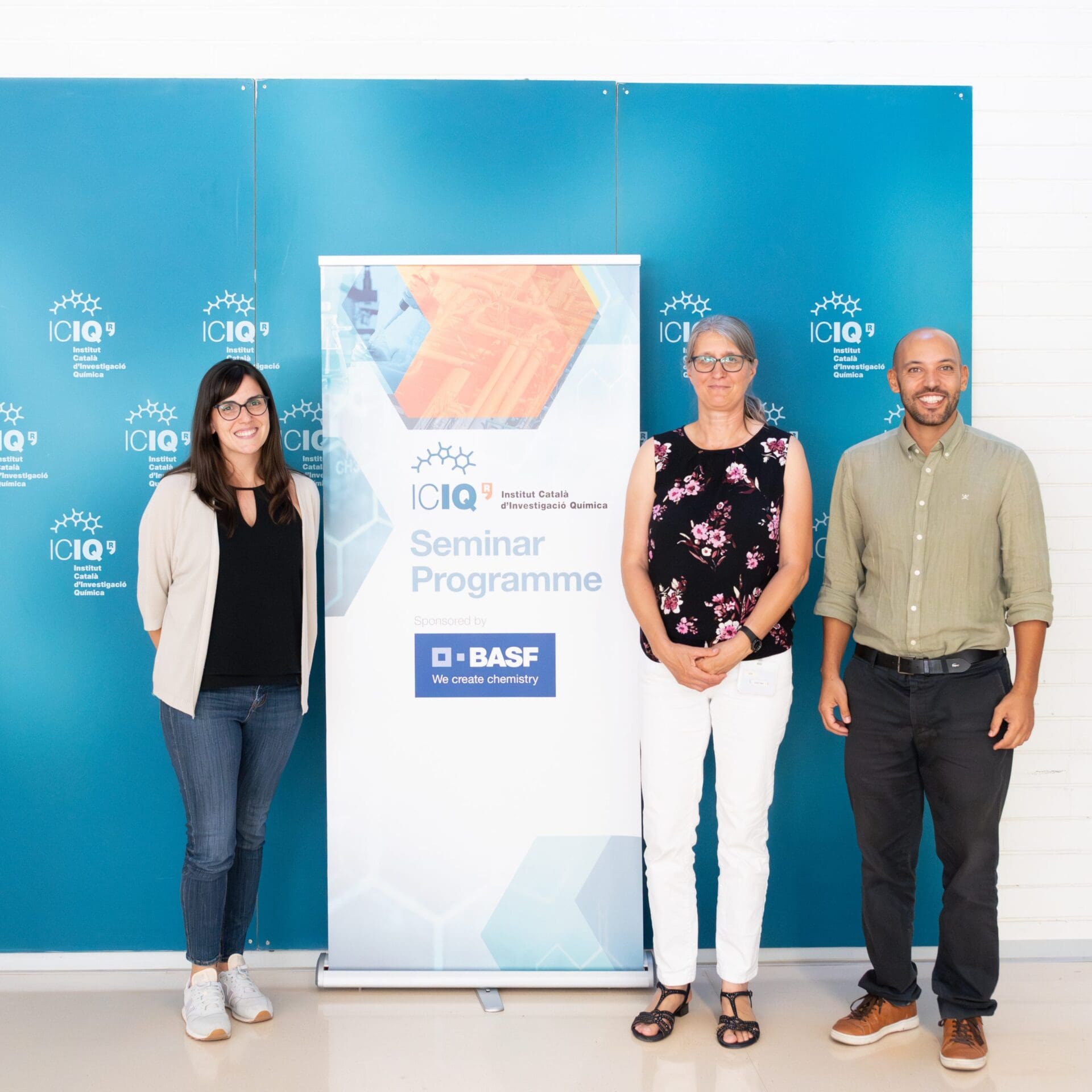
 27/09/2024
27/09/2024
 12:00 h
12:00 h
- Lecturer: Prof. Anja Palmans
- University: Eindhoven University of Technology, The Netherlands
- Sponsored by:

Folding a Water-Soluble Polymer Around a Catalyst: Consequences for Green and Bio-orthogonal Catalysis
The emerging field of single chain polymeric nanoparticles (SCPNs) aims to obtain nanometer-sized particles with well-defined global conformations in solution that are reminiscent of the intricate 3D structures formed by enzymes and proteins.1 Control over the conformation of a single synthetic polymer chain in water is typically achieved by using secondary interactions such as hydrogen bonding in combination with hydrophobic effects: hydrophobic interactions induce a collapse of the polymer chain, after which hydrogen bonds induce the formation of a structured inner compartment.2 As a consequence, nanometer-sized particles are formed with a hydrophobic inside and an hydrophilic shell. We have used the resulting compartmentalized nanoparticles as catalyst carriers for catalysis in water using organocatalysts3–6 and transition metal based catalysts7–9 to achieve green conversions in water, but also to induce catalytic conversions in complex cellular media.10–12 The latter is a challenging topic where catalyst stability and toxicity, substrate lipophilicity and targeting all need to be aligned to achieve the activation of prodrugs in the vicinity of diseased sites. Progress on all these topic will be discussed and challenges highlighted.
References
(1) Wijker, S.; Palmans, A. R. A. Protein‐Inspired Control over Synthetic Polymer Folding for Structured Functional Nanoparticles in Water. Chempluschem 2023, 88 (7).
(2) ter Huurne, G. M.; de Windt, L. N. J.; Liu, Y.; Meijer, E. W.; Voets, I. K.; Palmans, A. R. A. Improving the Folding of Supramolecular Copolymers by Controlling the Assembly Pathway Complexity. Macromolecules 2017, 50 (21), 8562–8569.
(3) Huerta, E.; Van Genabeek, B.; Stals, P. J. M.; Meijer, E. W.; Palmans, A. R. A. A Modular Approach to Introduce Function into Single-Chain Polymeric Nanoparticles. Macromol. Rapid Commun. 2014, 35 (15), 1320–1325.
(4) Huerta, E.; Stals, P. J. M. M.; Meijer, E. W.; Palmans, A. R. A. Consequences of Folding a Water-Soluble Polymer Around an Organocatalyst. Angew. Chem. Int. Ed. 2013, 52 (10), 2906–2910.
(5) Eisenreich, F.; Kuster, T. H. R. R.; van Krimpen, D.; Palmans, A. R. A. Photoredox-Catalyzed Reduction of Halogenated Arenes in Water by Amphiphilic Polymeric Nanoparticles. Molecules 2021, 26 (19), 0–11.
(6) Eisenreich, F.; Palmans, A. R. A. Direct C−H Trifluoromethylation of (Hetero)Arenes in Water Enabled by Organic Photoredox‐Active Amphiphilic Nanoparticles. Chem. – A Eur. J. 2022, 28 (52).
(7) Terashima, T.; Mes, T.; de Greef, T. F. A.; Gillissen, M. A. J.; Besenius, P.; Palmans, A. R. A.; Meijer, E. W. Single-Chain Folding of Polymers for Catalytic Systems in Water. J. Am. Chem. Soc. 2011, 133 (13), 4742–4745.
(8) Artar, M.; Souren, E. R. J.; Terashima, T.; Meijer, E. W.; Palmans, A. R. A. Single Chain Polymeric Nanoparticles as Selective Hydrophobic Reaction Spaces in Water. ACS Macro Lett. 2015, 4 (10), 1099–1103.
(9) Liu, Y.; Pauloehrl, T.; Presolski, S. I.; Albertazzi, L.; Palmans, A. R. A.; Meijer, E. W. Modular Synthetic Platform for the Construction of Functional Single-Chain Polymeric Nanoparticles: From Aqueous Catalysis to Photosensitization. J. Am. Chem. Soc. 2015, 137 (40), 13096–13106.
(10) Sathyan, A.; Croke, S.; Pérez-López, A. M.; de Waal, B. F. M.; Unciti-Broceta, A.; Palmans, A. R. A. Developing Pd(II) Based Amphiphilic Polymeric Nanoparticles for pro-Drug Activation in Complex Media. Mol. Syst. Des. Eng. 2022, 7 (12), 1736–1748.
(11) Sathyan, A.; Loman, T.; Deng, L.; Palmans, A. R. A. Amphiphilic Polymeric Nanoparticles Enable Homogenous Rhodium-Catalysed NH Insertion Reactions in Living Cells. Nanoscale 2023, 15 (30), 12710–12717.
(12) Deng, L.; Sathyan, A.; Adam, C.; Unciti-Broceta, A.; Sebastian, V.; Palmans, A. R. A. Enhanced Efficiency of Pd(0)-Based Single Chain Polymeric Nanoparticles for in Vitro Prodrug Activation by Modulating the Polymer’s Microstructure. Nano Lett. 2024, 24 (7), 2242–2249.
Other events

Let's create a brighter future
Join our team to work with renowned researchers, tackle groundbreaking
projects and contribute to meaningful scientific advancements




















